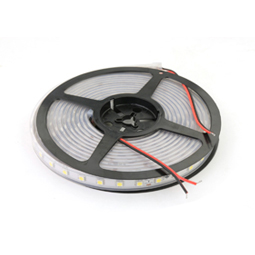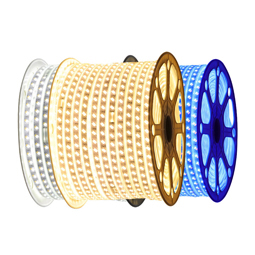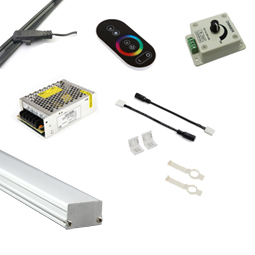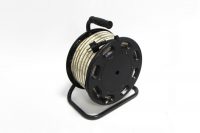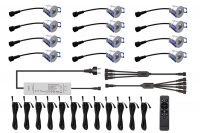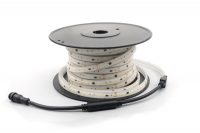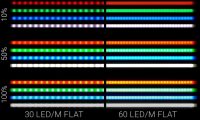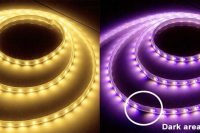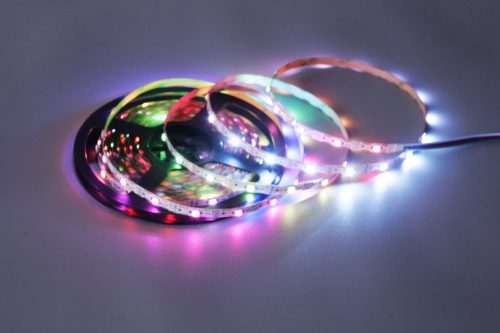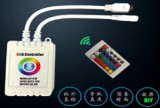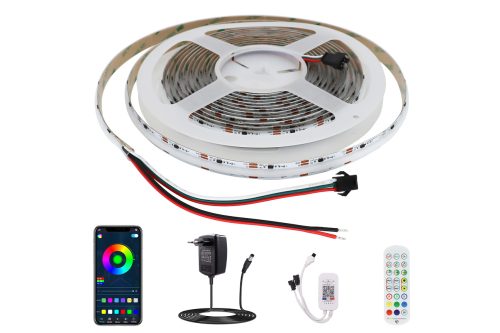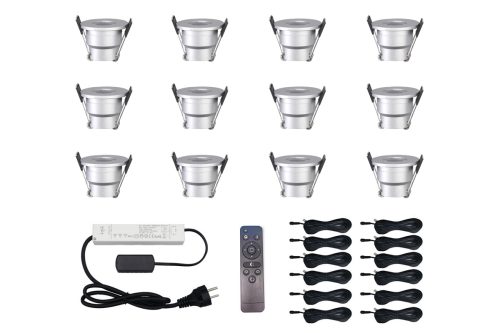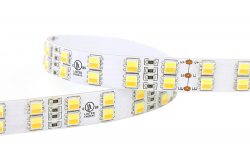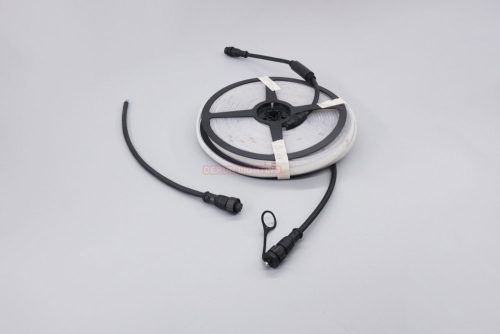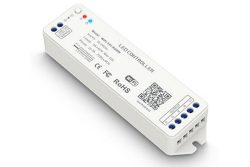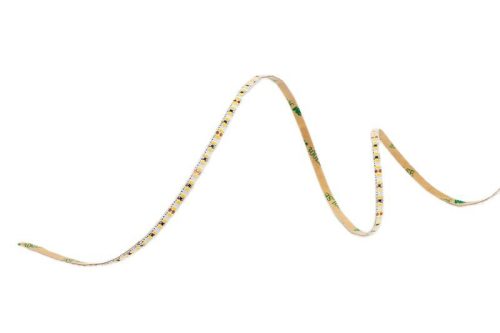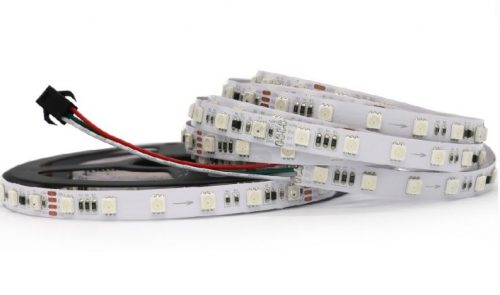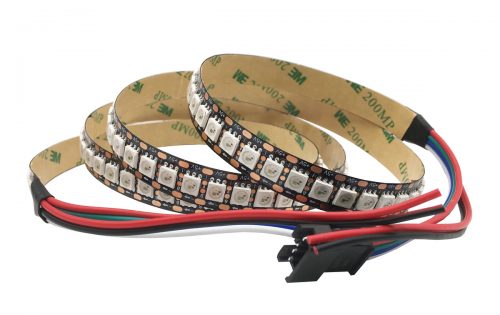If you ever looked at LED strips and went like RGB, RGBW, RGBWW RGBCW, RGBCCT. What the here does it all mean? Let’s try and find out.
So, first, some pre-work LED strip nowadays comes in lots of different forms, but the most commonly used form is called analog LED strip that means that all the LEDs on the strip will do the same thing. So if you set the LEDs to red, all the LEDs on the strip will become red for the common analog LED strip.
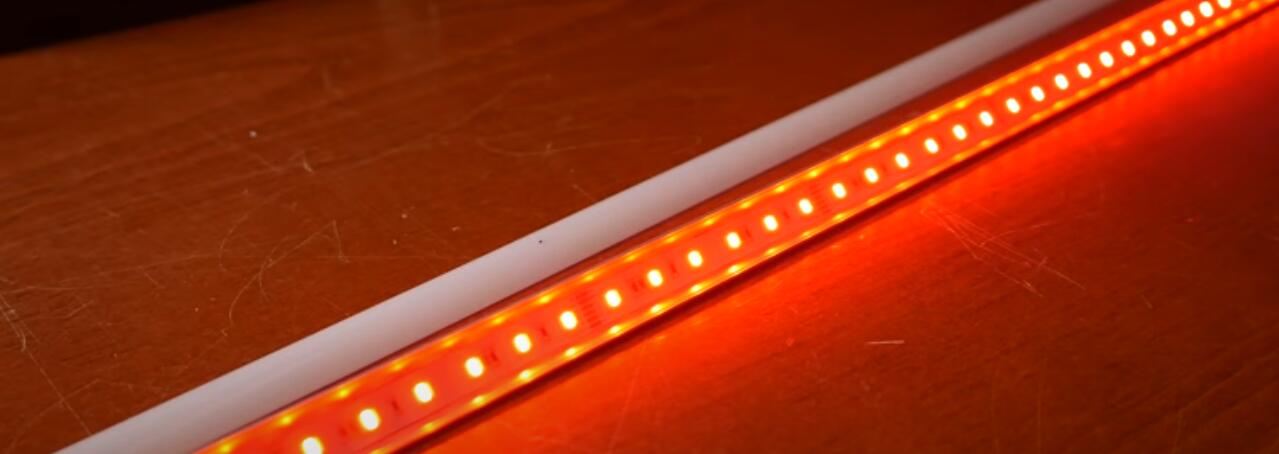
You also have a digital LED strip light nowadays and that’s also called addressable LED strip now. We won’t be talking about that in this article, but I’ll be writing more articles about that in the future.
Now white LED strip is also most often analog LED strip, and you use these RGB LED strips to accentuate a mood or create a colored background or something like that over the last few years.

These white LED strip lights and RGB LED strip lights have started to combine and new variants have started to appear.
Let me show you an example here, this one is one of the most high-tech I guess you could call it. Because it combines RGB( red, green, and blue), warm white, and cold white on the same strip.
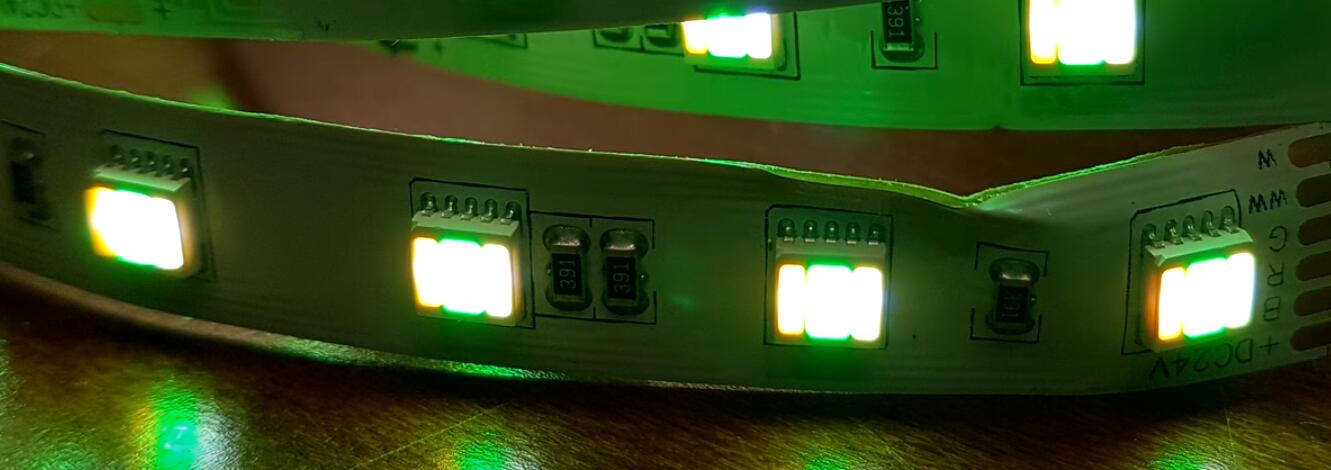
This has two purposes: you can use the strip for something different than just mood lighting, and also for general lighting which white is required. And you can vary the warmth of the white light because it has two white LEDs on different work.
And you still have the RGB, red, green, and blue, and if you mix those, you actually can make more different colors than you can do without the white LEDs. That way you can install one strip both for normal lighting, and accent lighting.
So let’s take a closer look at how these modern RGB and RGBCCT in RGBW and RGBWW. And all those things look and see what makes them different from white LED strip or RGB, normal RGB LED strip.
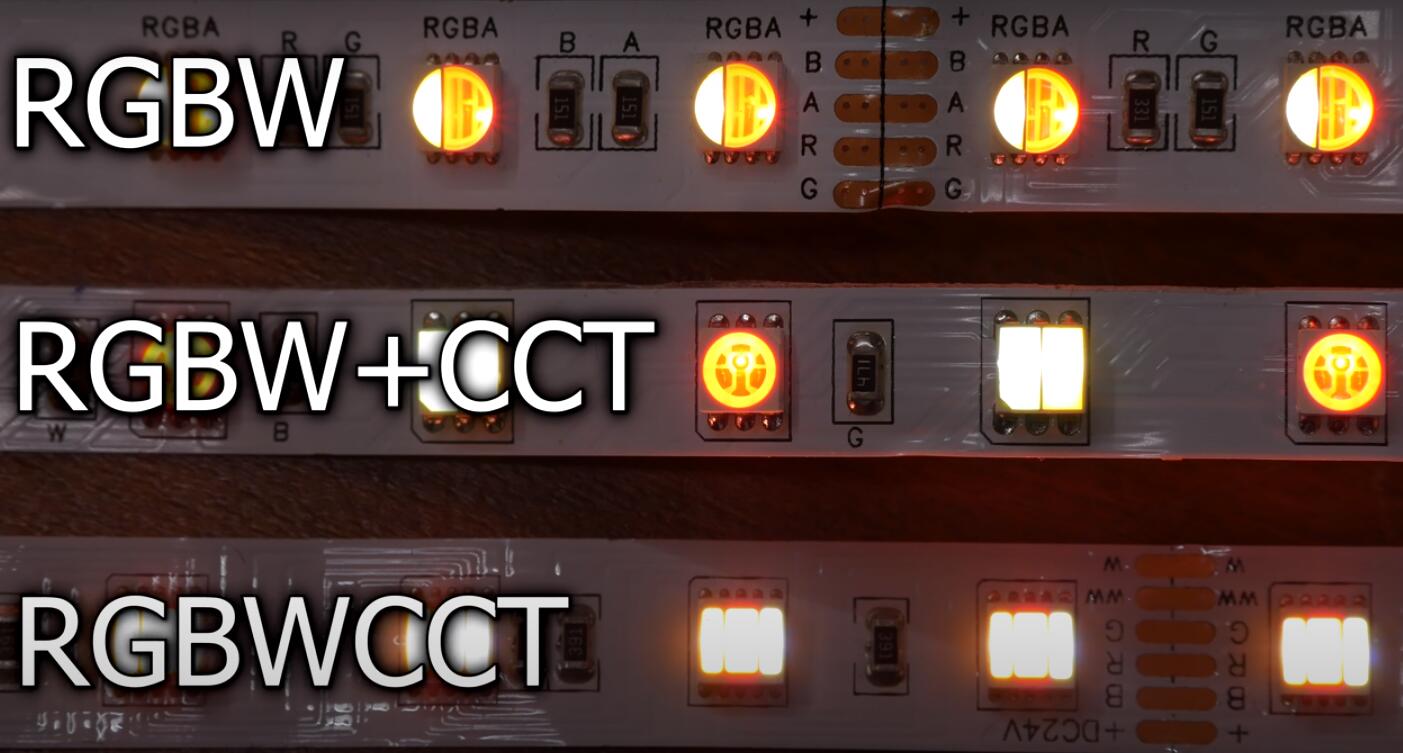
Here you see an RGB LED strip and an RGBCCT led strip. The top led strip is as I said one of the newer RGBW variants where they have four LED chips in a single module. On the strip below that, you have an RGB module, and then you have a CCT module.
I guess you could call it RGB+W because they split the RGB and white color temperature. and then the model below that is the one I mentioned just now. It has the five led colors in a single module now.
The main reason to choose one of the other is basically price. Having all the LEDs in a single module as its upside and also them is downsides.
You only need a signal edit LED strip for all the colors, but the downside is that each LED module that contains the five LEDs in there is more expensive. Let’s take a closer look at how these LED strips actually make colors.
First of all, we’re going to turn on the strips of just red as you can see in all the LED strips or all the modules.
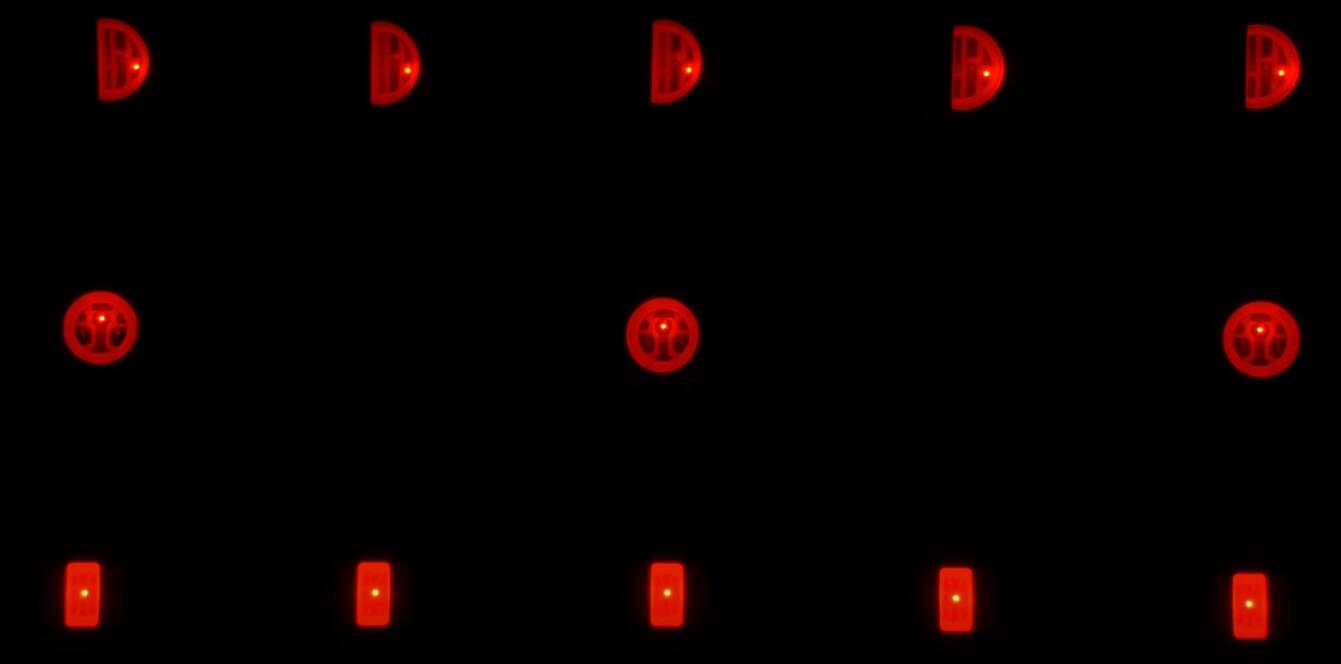
They each have a single red LED per module. then if I switch from red to green, you see the red LED dim and the green LED dot lights up.
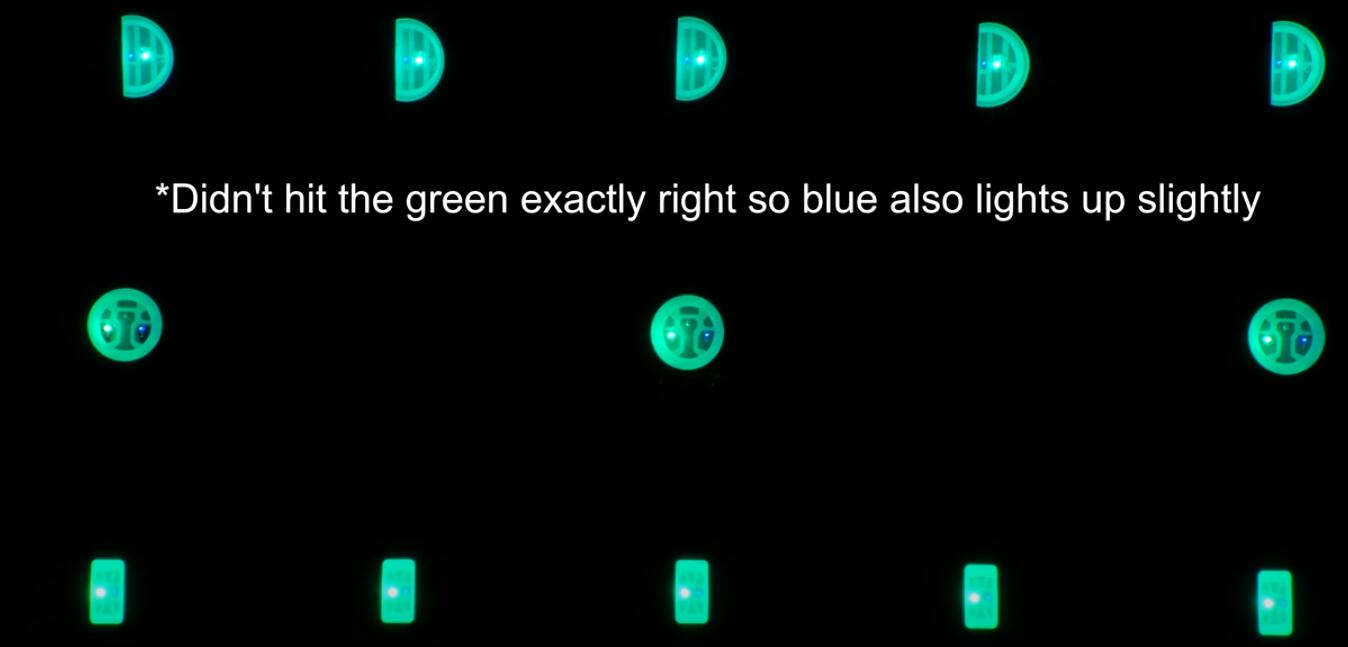
And then we go from green to blue.
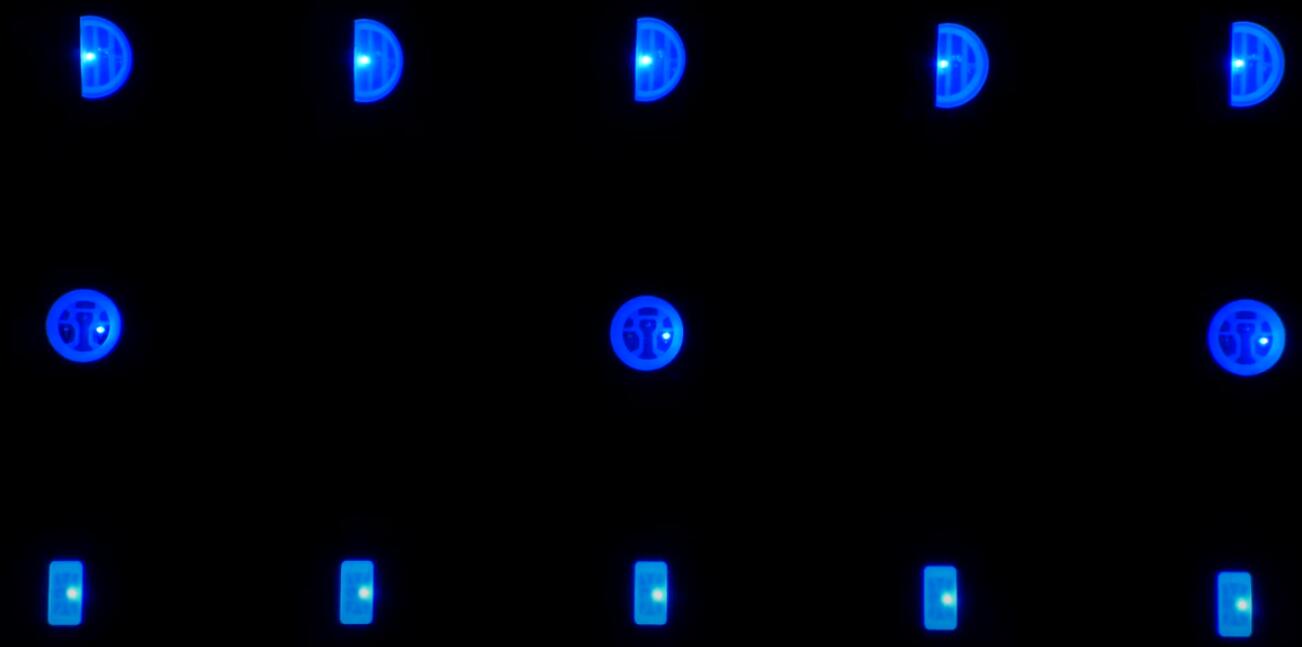
So going from red again if we go to a color that’s in between red and green. We see that both the LEDs light up. Now on a generic led strip, each of these LEDs can be set to about 255 levels and by varying between three colors. You can make about 16 million different colors.
An important factor to note is that if you combine all the colors, you can also simulate a white color.
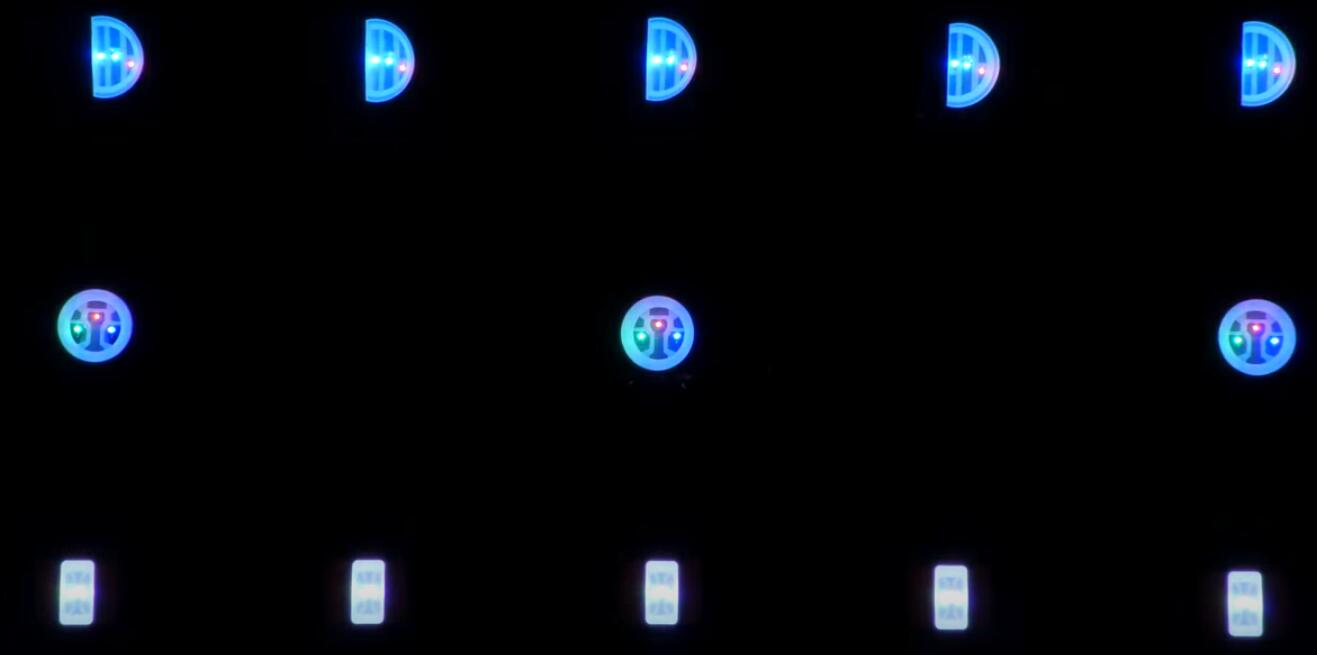
But as you can see here in the picture, white will always be kind of off because even though white light is all colors combined, it just doesn’t work well that way with LED strips, and that’s why you want the dedicated white LEDs in there.
Now let’s take a look at the effect of adding our RGBW on the two low strips showing cold white and warm white.
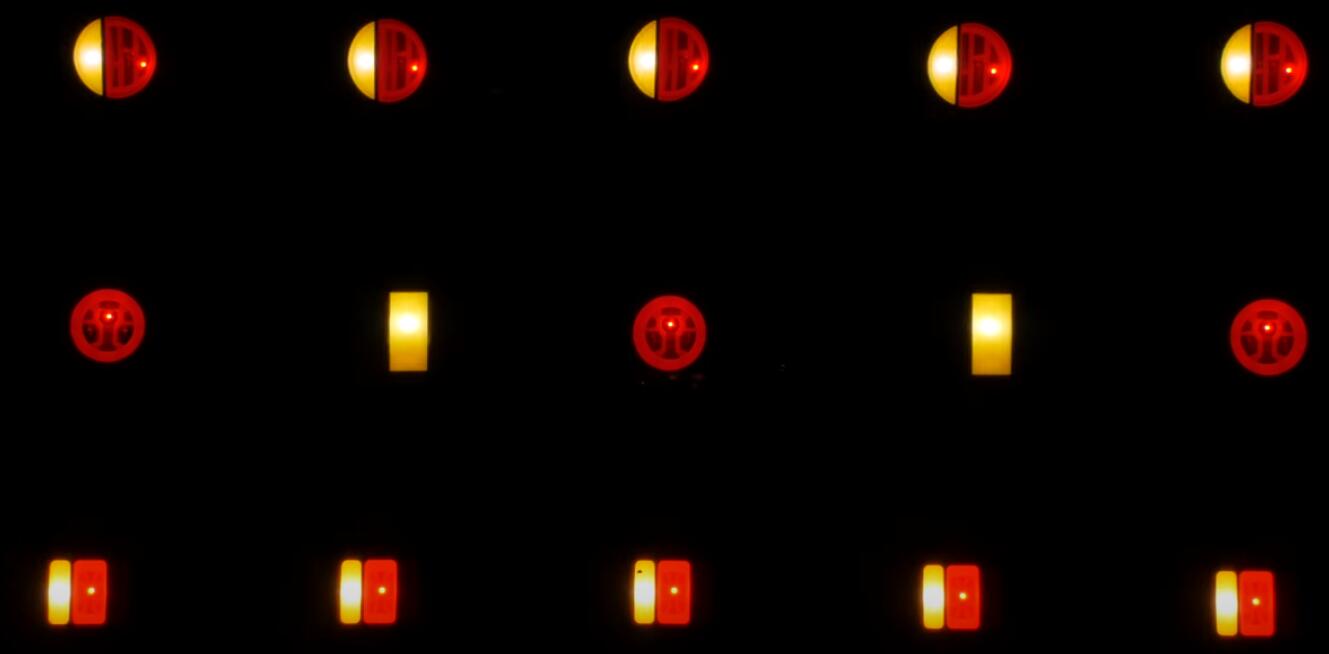
Now you see what the LED modules do and not so much the effect of delight.
It produces okay, let’s run through that.
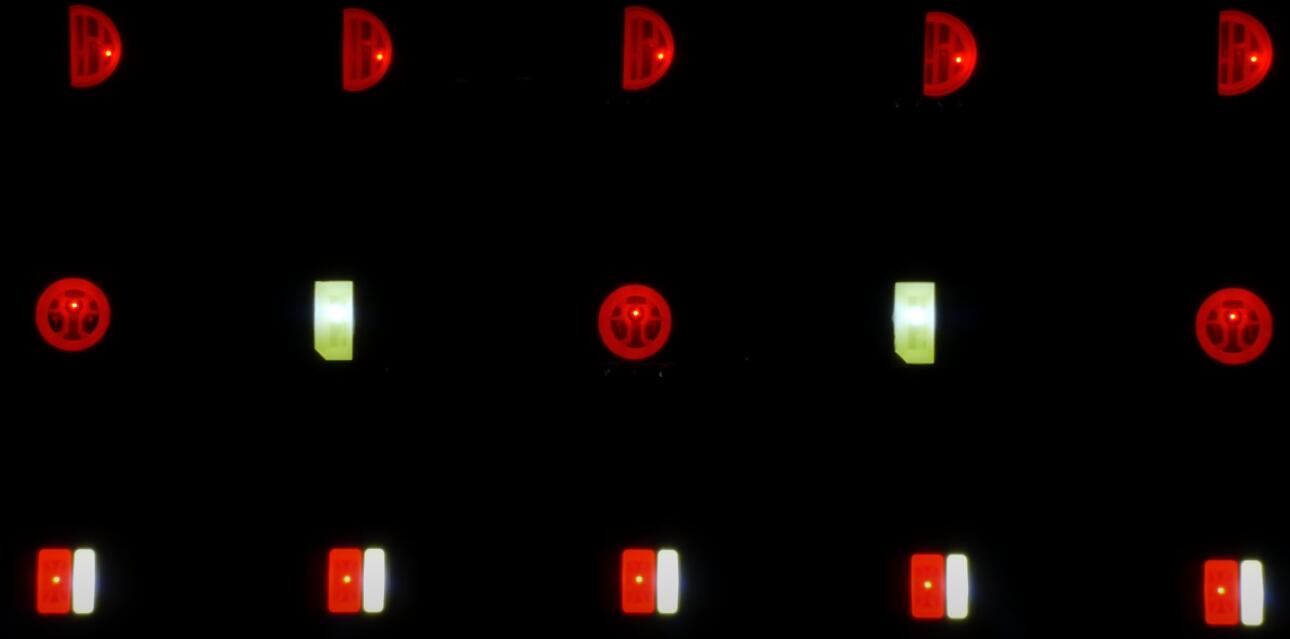
And here you can see me changing from the warm white to the cold white, and since the top strip only has RGBW. Because it only has warm white in it, it doesn’t see the change or the LED goes off.
Okay, I think that explains what the difference is between white LED strip, RGB LED strip, RGBW or RGBCW(cold white instead of warm white), and RGBCCT or WW + CW.
Now, why would you choose one strip but the other? As I said, the main factor is price. If we look at the middle LED strip, and the lower LED strip in the middle uses cheap run-in-the-mill RGB LEDs and then bigger packages for their cold white and warm white.
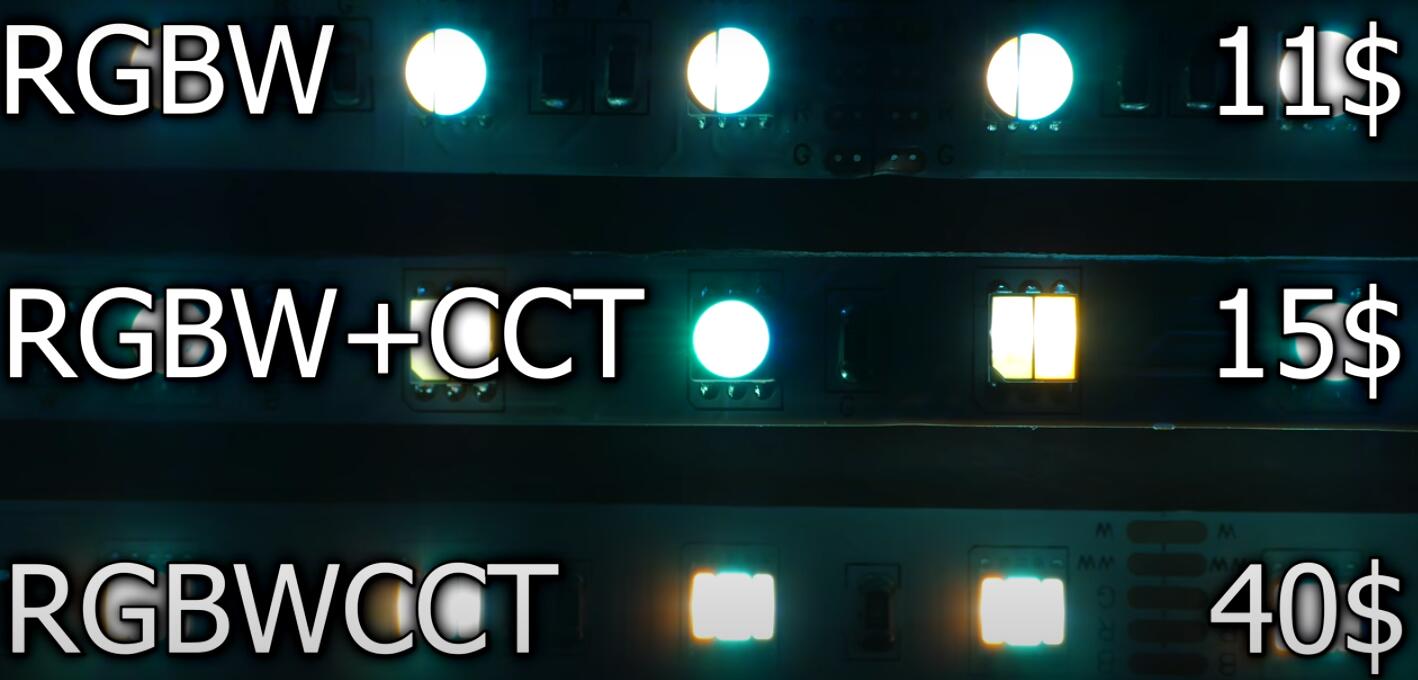
Now, these are both very cheap packages, so if you combine them on a strip like this you pay about $15 for five liters of it. If we look at the lower LED strip where they combine the five LEDs in a single module or package. That’s a lot more expensive because it’s more precise work in. It’s less mass-produced etc, so instead of $15 that same strip costs $40.
Another difference is the light output that these modules can produce. Since the lower led strip with all the LEDs in the same module has to have a lot more in the same stip, and it can’t use too much power, or will become too hot, etc. The light output for pure color is lower than from the other strips.
On the other hand, if you combine all the colors in making whatever light you need, It can output a decent amount of light. So it really depends on your situation. Now, do I recommend buying RGBW CW CCT whatever LED strip? Well, that’s kind of hard actually for me personally, the answer would be no.
The reason is that this is not a pure color LED strip, RGB, or whatever other variants, the light output per pure color is a lot lower. So if I wanted to make background lights like this, I’d need a lot more strips to be able to achieve.
That also goes with the W, CW, and CCT variants the amount of white LEDs. And the power output that the packages can handle is a lot lower, so light for like in a studio like this.
I would again need a lot more LED strips than I do of normal white LED strips, then combine this. The fact that I’m very sensitive to the quality of a white LED strip or also called CRI, or are a value that just isn’t there in these combined chips gives white light. But it’s not really great quality, which means that I personally don’t use it.
I then just put in an RGB strip or a single color strip, and then add the white color, so I like but that means’s more expensive.





